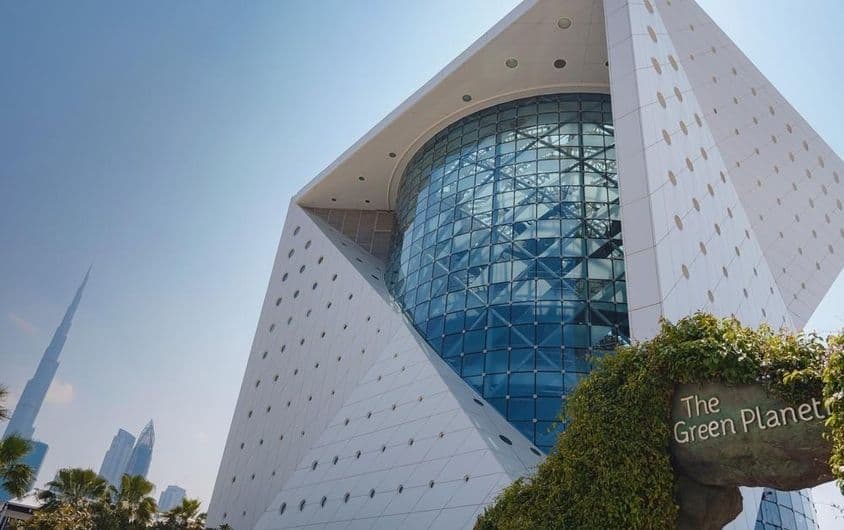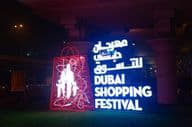Dubai's Green Skyscraper Revolution

Green Skyscrapers in Dubai’s Future – Trees Shaping the Skyline, Not Concrete
Dubai's vision for the future is increasingly shifting towards sustainable urban development, where the built environment is integrally intertwined with natural elements. In the latest concepts, the future of Dubai will not only consist of skyscrapers but also green 'skyscrapers' with living trees that simultaneously cool the city, purify the air, and define the landscape. The flagship of this new direction is the Re-Leaf initiative, which uses artificial intelligence to visualize the cooling effect and spatial arrangement of trees, aiding urban planners in the conscious design of green spaces.
The Re-Leaf Project and Urban Greening Technology
Re-Leaf is not a traditional tree-planting program. It's an innovative system supported by artificial intelligence, capable of accurately mapping where and to what extent trees contribute to urban cooling. The project's goal is to provide data by examining Dubai's districts on the effectiveness of vegetated areas, thereby optimizing urban heat mitigation opportunities.
The uniqueness of the system lies in depicting the 'green height' of different city districts—rather than traditional buildings appearing on the map, Re-Leaf displays green blocks whose height indicates the amount of vegetation in the area. This visualization helps to understand how naturally a certain environment cools the city and where further afforestation would be necessary.
Resident Interaction and Urban Livability
One of the most innovative parts of the project is an interactive web application that enables residents to explore Dubai's different green areas. Through the application, anyone can see the impact of a particular street or park on the local microclimate, compare the green area ratios of districts, or virtually 'zoom in' on a tree to check its cooling performance.
This digital approach not only increases transparency and community participation but encourages residents to consciously support the expansion of green areas. Such a system can long-term promote residents to be not just passive recipients but active shapers of the city's climate-friendly future.
The Concept of 'Green Skyscrapers'
According to the vision of the Re-Leaf project, the future cityscape of Dubai will not be dominated by concrete and glass, but by a design approach where nature and technology complement each other in shaping the urban landscape. The notion of 'green skyscrapers' symbolizes this: rather than literal tall buildings, it refers to living, towering greenery that can cover buildings or exist independently at various points in the city.
With this concept, Dubai not only becomes visually unique among the great cities of the world but also sets an example of how sustainability can exist beyond slogans through concrete technological and social steps.
Sustainable Vision in Multiple Areas
Re-Leaf is not an isolated project. Dubai's city leadership is taking steps in various areas to make the city a model of sustainable future urbanism. This includes the Dubai Reef project, which helps restore marine biodiversity by creating artificial coral reefs. The project employs robotic technology to protect and expand the ecosystem, contributing to ecological balance.
In parallel, Dubai is working on increasing terrestrial transportation efficiency by developing robotic delivery units to reduce urban traffic, particularly for 'last mile' deliveries. The application of autonomous technologies not only brings logistical efficiency but can also contribute to emission reduction.
The Role of Test Environments in Dubai's Development
Future-oriented projects are implemented in Dubai through a special platform, known as 'sandbox' environments. These are test environments where innovative ideas can be tried under real conditions without immediate, wide-scale introduction. This allows for early error detection, system fine-tuning, and the rapid adaptation of data-driven developments.
The sandbox platform accommodates initiatives like the testing of gig-based economies, offering work flexibility for short-term, project-based jobs. This type of employment, following the 'Uberization' logic, plays an increasingly important role in modern labor markets—Dubai recognized this in time and is preparing for the jobs of the future with experimental projects.
Summary
Dubai’s developmental directions clearly demonstrate that the city is not merely building on size and luxury but is moving towards a more livable, intelligent, and sustainable future. The Re-Leaf project contributes to this not only on a technological level but also symbolically: it reinterprets the role of urban vegetation, and views trees not merely as decorative elements but as functional factors fundamentally influencing urban quality of life.
Thus, Dubai could become the first city in the world where the skyscrapers of the future are not just built from steel and concrete but also from roots, leaves, and a new perspective—where nature, technology, and human community cooperation are the most important building elements.
(The article is based on the Re-Leaf project.)
If you find any errors on this page, please let us know via email.


